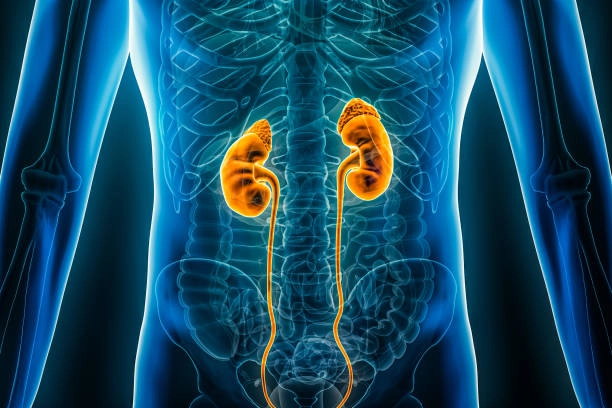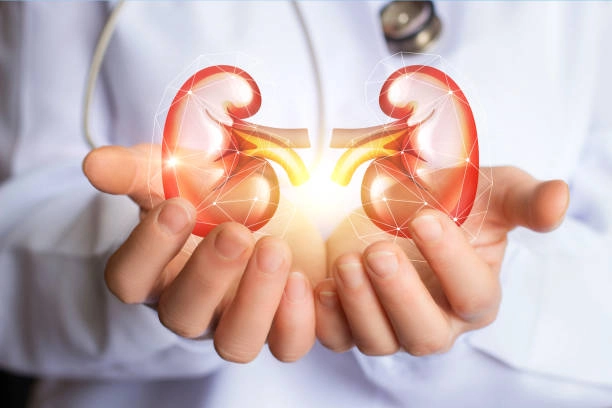Health
Health
Which Medications Can Harm Your Kidneys?
Understanding the medications that contribute to kidney disease is a critical component in managing the serious condition. Common drugs like NSAIDs, antibiotics, and blood pressure medications can pose nephrotoxic risks, potentially leading to kidney damage. Knowledge of key risks, alongside regular healthcare consultations, is essential in preventing medication-induced kidney complications and maintaining overall kidney health.
Health
8 Common Medications That Can Be Harmful to Your Kidneys
Some drugs are nephrotoxic, which means that their effects can cause kidney damage.1 Drugs such as certain antibiotics, the mood stabilizer lithium, and nonsteroidal anti-inflammatory drugs (NSAIDs) can potentially harm the kidneys, especially under specific conditions.
Health
Everyday Medicines That May Harm Your Kidneys: What to Know and How to Stay Safe
Many people keep everyday medications at home—pain relievers, antibiotics, heart medicines, diuretics, and supplements. These drugs are widely used and often necessary. However, some common medications can be harmful to the kidneys, especially when taken long-term, used without guidance, or combined with dehydration or other illnesses. This article explains which drug categories can stress or damage the kidneys, how the damage happens, who is at higher risk, and practical steps to protect kidney health. The goal is not to create alarm or to suggest stopping medications independently, but to help you use medicines safely and understand when monitoring matters.
Health
Long-term PPI Use and Kidney Function: Evidence, Misconceptions, and Practical Guidance
If you or someone you know takes a PPI (proton pump inhibitor) such as omeprazole or lansoprazole daily, you may have read reports linking long-term PPI use to kidney problems. While there is evidence suggesting a connection, the relationship is complex. Most studies are observational, and the absolute risk is small for many individuals. Understanding the science, recognizing misconceptions, and learning practical ways to monitor and manage reflux can help guide safer choices.
Health
Protect Your Kidneys: How Common Painkillers Can Harm
If you often reach for over-the-counter pills to relieve headaches, back pain, or arthritis flares, you’re not alone. But it’s crucial to understand that common painkillers can affect kidney function. The term “painkillers kidney damage” reflects a real, dose- and context-dependent risk, especially if you take medicines frequently, have other health conditions, or combine multiple drugs. This article explains how common pain medicines act on the kidneys, who is most vulnerable, warning signs, and safer alternatives to manage pain while protecting renal health.
Health
Precision Medicine in Lung Cancer: The Role of Braftovi and Mektovi
Braftovi® (Encorafenib) and Mektovi® (Binimetinib) are used in combination for patients with non-small cell lung cancer (NSCLC) carrying the BRAF V600E mutation. By precisely targeting tumor growth pathways, this therapy enhances tumor control while significantly reducing the side effects commonly associated with traditional chemotherapy, thereby improving patient quality of life. Patients should undergo genetic testing and receive treatment under a multidisciplinary team’s guidance, with ongoing monitoring of response and safety. This combination represents a significant advance in precision medicine for lung cancer, offering a personalized, effective, and safer therapeutic option for eligible patients.
Health
Sculpt without Surgery: The Truth About Non-Invasive Fat Reduction
Non-invasive fat reduction has become increasingly popular among people who exercise regularly but still struggle with small, stubborn fat pockets. This type of fat often doesn’t respond to dieting or cardio, and many seek a quiet, gradual improvement — no surgery, no scars, no long recovery. But does non-invasive fat reduction truly work? Is the fat loss permanent, and what needs to be done to maintain results? This article explains the science behind non-invasive fat reduction, realistic expectations, how long results last, and how to combine treatment with lifestyle habits to sustain improvements.
Health
Non-Invasive Fat Reduction: Complete Guide to Safe Body Sculpting
Non-invasive fat reduction refers to medical aesthetic procedures designed to reshape and slim specific body areas without surgery, incisions, or general anesthesia. These treatments use controlled forms of energy — cold, heat, ultrasound, laser light, or electromagnetic fields — to reduce the number or size of fat cells in targeted zones. The body then naturally processes and removes the damaged fat cells over time. It is important to distinguish body contouring from weight loss. Non-invasive fat reduction is not intended to significantly reduce total body weight. Instead, it aims to smooth or slim areas where fat is resistant to diet and exercise. The best candidates are generally healthy adults close to their ideal weight but seeking more refined shape or improved muscle tone. Below, we explore how the major non-invasive technologies work, expected results, safety considerations, who benefits most, and how widely these treatments are used in the United States.
Health
Non-lnvasive Fat Reduction Techniques: What You NeedTo Know
If you’re exploring non-invasive fat reduction, you may be looking for ways to remove stubborn localized fat without surgery, anesthesia, or long recovery. This guide explains what these treatments can and cannot do, how each technology works, how results develop over time, safety considerations, and how to choose a qualified provider. The goal is to support informed decision-making with realistic expectations.
Health
Understanding Non-Invasive Fat Reduction Techniques
Non-invasive fat removal treatments have redefined body sculpting by offering innovative alternatives to traditional surgery. Techniques such as cryolipolysis and laser lipolysis efficiently reduce fat with minimal downtime. Modern methods cater to those seeking effective fat reduction and skin enhancement without invasive procedures. Understand the latest trends and expert insights in body contouring.
🔥🔥Popular Posts











